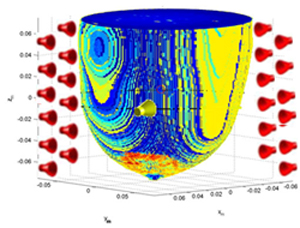
The study of the interaction between electromagnetic fields and biological systems, such as the human body, has been for a long time one of the most active sectors in basic and applied research involving the technologies of electromagnetism. If historically these activities were focused on the study of the possible harmful effects of the interaction between fields and biological systems as well as dosimetric evaluation, an innovative paradigm has recently emerged, which looks to the remarkable possibilities offered by the use of such interaction to produce a specific effect.
Evidently, this new paradigm is of significant interest in the medical field, where the nature of the non-ionizing electromagnetic fields, their ability to penetrate matter, and the specificity of the electromagnetic properties of the different human tissues (also in dependence of their pathological condition) gave the impetus to the study and development of new diagnostic and therapeutic methodologies, which may cooperate with those currently in use in order to improve the quality (and the precocity) of the diagnosis, or contribute to more effective treatment of certain diseases.
A possible example of therapeutic application of this new paradigm is microwave hyperthermia, wherein the selective heating of cancerous tissues, by focusing the energy of the microwave field in the region of interest, is exploited to induce apoptosis (ablation) of diseased cells or to locally increase the effectiveness of chemotherapy and radiotherapy. In diagnostics, one example is the morphological and functional screening for the early diagnosis of breast cancer, which exploits the different microwave response of healthy tissues compared to the diseased ones, in order to obtain diagnostic information from the measure of the fields scattered by the anatomic region under examination.
In this frame, the research activity carried out at IREA for some years deals with the development of innovative diagnostic and therapeutic strategies based on the use of electromagnetic fields at microwave frequencies. In particular, it aims at the definition of the exposure conditions needed to induce the desired effect, the synthesis and tuning of the radiant systems and the development of methods for the processing of data aimed at the extrapolation of diagnostic information.
About diagnosis, the focus is on two issues. The first is the development of a novel technique for the early diagnosis of breast cancer, which uses nanomagnetic contrast agents able to selectively concentrate in cancerous tissues. Thanks to the non-magnetic nature of the human body, the use of such a contrast agent, already approved for other biomedical applications, allows to reduce the incidence of false positive and negative, with an obvious benefit in terms of reliability and quality of diagnosis. The second topic concerns the study of the use of differential microwave imaging techniques to monitor the evolution of the disease in its course during a therapy. In particular, the focus is on the monitoring of physiological changes of brain tissue caused by alterations of normal blood flow (ischemia, hemorrhage) or traumatic events (hematoma). In both cases, the research activities aimed at the design of devices able to optimize the interaction between electromagnetic fields and human tissue and to develop imaging approaches capable of characterizing, from the point of view of the electromagnetic properties, complex biological environments.
With regard to the therapeutic aspects, the research addresses the development of new methods for the microwave hyperthermia, and in particular the design and implementation of applicators capable of focusing the electromagnetic energy in the diseased tissue, while minimizing the heating of the surrounding tissues so to avoid side effects. The use of appropriate optimization techniques for the synthesis of the field and the accurate numerical modeling of the propagation of the electromagnetic signal and its interaction with biological structures exposed are crucial for the activity, which also provides the tools necessary to a suitable planning of specific therapeutic treatments.
Finally, it is also topic of research the possibility of using the set of methods and tools developed for the development of “theranostic” systems, in which the dual nature (diagnostic / therapeutic) of microwaves is used in a synergistic way. In particular, the goal is the design of a system, which integrates a device for thermal therapy with a diagnostic device, able to obtain the information required for the planning of the specific therapeutic treatment and verify work in progress and the evolution's effectiveness.


